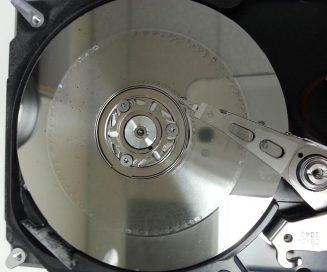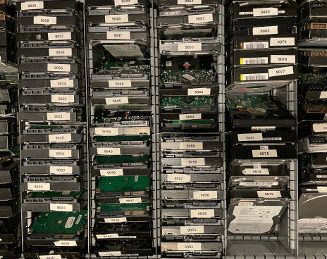Looking for something? Refine your search
- Categories
- Backup
- Cloud
- Computer Forensics
- Computing and CPU Power
- Cryptocurrency
- Damage
- Data Loss Prevention
- Data Recovery Knowledge
- Data Recovery News
- Data Recovery Service
- Data Types
- Database
- Digitization
- Encryption
- Flash Drive
- Hard Disk
- Investing and the Stock Market
- Mac/Apple
- Media
- Mobile Device
- NAS
- Network Security
- Office Documents
- Outreach
- Photos & Images
- RAID
- Ransomware Recovery
- Removable Media
- SAN
- Secure Deletion
- Server
- Services
- SSD
- Storage Industry
- Tape
- Uncategorized
- Video
- Tags
- actuator
- Apple
- backup
- bitcoin
- breach
- clean room
- clone
- computer forensics
- cryptocurrency
- cybercrime
- data recovery software
- data recovery tips
- decision tree
- EEPROM
- encryption
- ethereum
- exploit
- financial records
- fire damage
- flood
- guide
- hard drive data recovery
- hard drive failure
- hard drive manufacturers
- head ramps
- helium
- how to
- hurricane
- iOS
- landing zone
- leak
- Mac
- Mac OS
- machine learning
- macos
- Midwest
- migration
- music data recovery
- NAND
- NFT
- NVRAM
- operating system
- OS X
- parts
- password
- PCB
- Phoenix
- power surge
- RAID
- ransomware
- rebuilt
- SATA
- SaveMyFiles
- SSD
- statistics
- storms
- tornadoes
- TRIM
- video conversion
- virus
- water damage
- wildfires
- windows 10
- windows 10 guide
Miss Defragmenting Your Hard Drive? This Website Is For You.
Back in the 1990s, hard drive defragmentation was an essential part of weekly computer maintenance — and for some people, it was the best part. Windows 95 and 98 provides a graphical disk defragmenter with a grid that gradually changed...
July 17, 2024
How Does Block Erase Work on a Solid-State Drive?
Block erase (also referred to as “secure erase” and by other names, depending on the implementation) is an ATA command that tells the SSD’s controller to apply an erase voltage. The voltage is applied to all NAND cells of the...
July 3, 2024
Recovering Data From a Previous Version of an Excel Spreadsheet
You’ve accidentally made changes to an Excel spreadsheet, and you want to roll them back. Good news: It’s not an especially difficult task. Newer versions of Microsoft’s Excel software include a Version History feature, which you can use to restore...
May 29, 2024
What Is Hard Drive Platter Contamination?
Hard drive platter contamination occurs when foreign particles (or contaminants) reach the platters that store your data. The platters are thin metal or plastic discs covered with a thin magnetic material. Under normal conditions, read/write heads float just above the...
May 14, 2024
Why Is NAND Data Recovery from Cracked Chips Impossible?
Data recovery laboratories can restore data from fire-damaged hard drives, flooded servers, and ransomware-infected RAID arrays — but if you break a memory card in half, many professional providers will refuse to take the case. Unfortunately, breaking a NAND memory...
April 17, 2024
RAID 10, Explained: Should You Use It?
RAID stands for Redundant Array of Independent Disks (or, alternatively, Redundant Array of Inexpensive Disks). It’s a technology that allows multiple hard drives or solid-state drives to function as a single volume. The primary advantage of RAID is right in...
April 4, 2024
Categories of Hard Drives
Hard disk drives (HDDs) are typically categorized by their interface or by the technology used to store data. In this article, we’ll provide a brief definition of each “type” of hard drive and how categorization plays a role in the...
April 1, 2024
What Is a Hard Drive’s ROM Chip?
Many modern hard drives have a Read Only Memory (ROM) chip on their printed circuit boards (PCBs). The ROM contains firmware, which allows the hard drive to communicate with your computer. Within the data recovery industry, the term ROM chip...
March 25, 2024
Understanding External Hard Drive Enclosures
While solid-state drives (SSDs) are quickly becoming the go-to option for internal data storage, external hard drives are still popular with consumers, and for good reason. If you need to store a large number of files, an external hard drive...
March 14, 2024
What Happens When You Drop a Hard Drive in Water?
If you’ve dropped liquid onto a hard drive — or dropped a hard drive into liquid — the prognosis for data recovery is good. That’s despite the fact that every component of a hard drive could be damaged by water...
March 13, 2024










